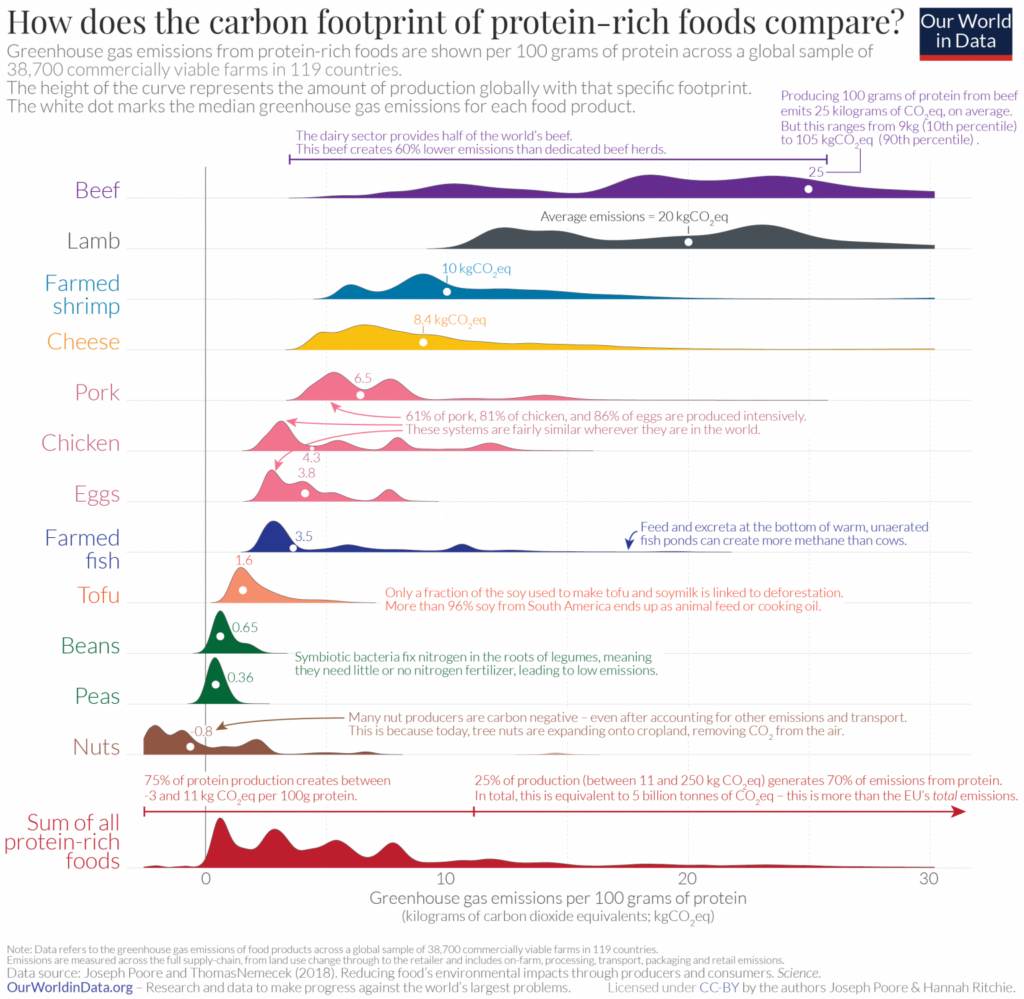All food generates greenhouse gasses, from the source all the way to reach our plates. The good news ? It is possible for us to reduce food carbon footprint. All food generates greenhouse gasses, from the source all the way to reach our plates.
All the foods and drinks we purchase and consume are responsible for greenhouse gas emissions, whether it comes from flying the produce across the continents or heating the greenhouse it’s grown in.
Our Food Shop Affects the Planet
From the production of raw materials , industrial processing, transport, storage, supermarket shelving to our kitchen tables, all our foods take energy and greenhouse gasses emitted. With that in mind, here are three simple rules you can do to reduce carbon in our food basket :
1. Diversify Our Protein Sources
For many of us chicken, beef and fish are convenient and familiar sources of protein. It is also widely available and affordable. However, we also aware about the catastrophic damage of to the environment and our health caused by animal agriculture. So what should we do ?
Diversifying our protein sources can significantly reduce our carbon footprint. Plant-based protein sources, such as tofu, beans, and nuts, have the lowest carbon footprint. The peas with the highest footprint emit just 0.8 kgCO2 per 100 grams of protein. For nuts it is 2.4 and for tofu, 3.5 kgCO2 eq. All are several times less than the lowest impact lamb (12kgCO2eq) and beef (9 kgCO2eq). Emissions are also lower than those from the best cheese and pork (4.5 kgCO2eq); and slightly lower or comparable to those from the lowest-footprint chicken (2.4 kgCO2eq) (source : OurWorldInData.org)

2. Organic Doesn’t mean low carbon
While many consumers may associate “organic” and “free range” have higher environmental quality and lower carbon footprints, the reverse is true. More common than not, organic farming requires more land, hence generate higher greenhouse gas impact than conventional farming. Soy milk, organic pease, and free-range eggs require larger area of lands to produce the same amount of food. The greater land-use in organic farming leads indirectly to higher carbon dioxide emissions, thanks to deforestation.
3. Choose Local Not Air-Freighted Foods
How far did your fruits and vegetables commute ? Have you ever heard about the food miles ?
The food miles are the distance a certain food has to travel from its point of origin to its destination – our kitchen table. While many of us may not think twice about the kind of food we are buying, it is really has a drastic affect on the environment, due to the amount of carbon dioxide released during transportation, especially perishable products that are transported by Air, which emits 50 times more CO2 than boat per tonne kilometre (source : our world in data).
Asparagus, berries, and green beans are common air-frighted foods. They tend to be foods which are highly perishable and require strong emphasis on ‘freshness’. For these products, transport speed is a priority.
Solution : choose local and be in synchrony with the nature season where you live. Choose fruits and vegetables that currently in season can significantly reduce the carbon in our food basket.



